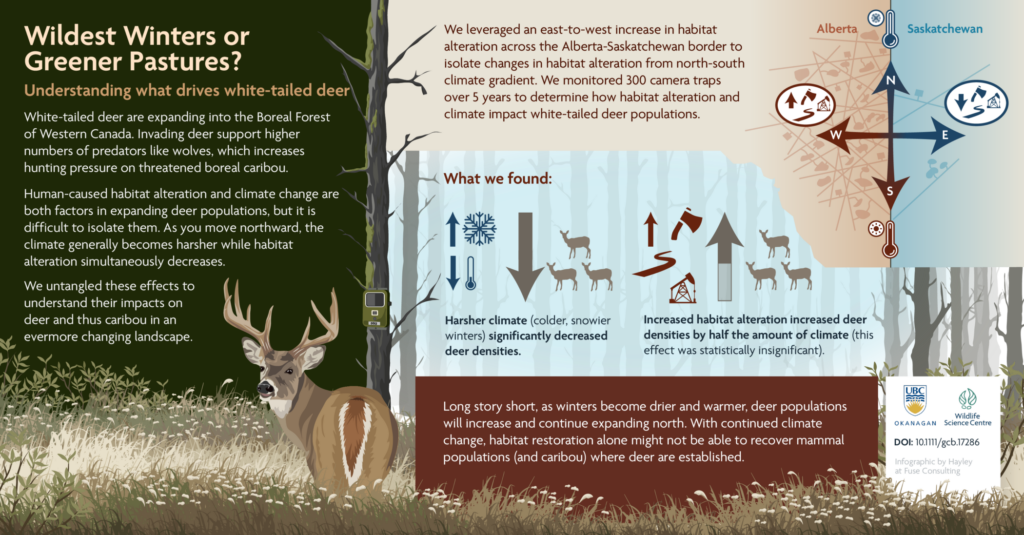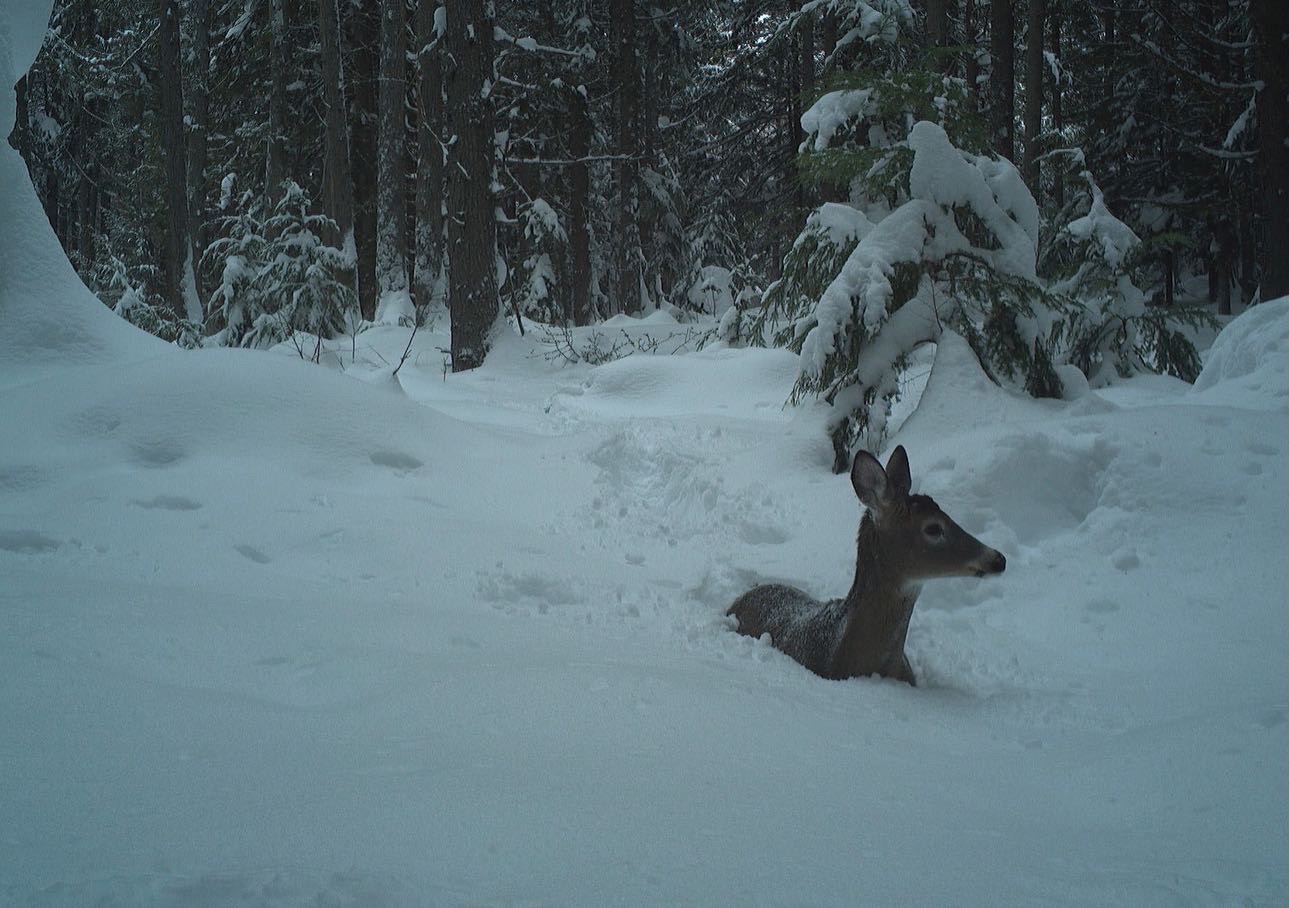New research shows that the expansion of white-tailed deer into the northern boreal forest is linked to less severe winters
APRIL 25, 2024—Over the past century, white-tailed deer have greatly expanded their range in North America. In the boreal forest of western Canada, habitat alteration—forestry and energy exploration creating more and new food sources—and a changing climate have enabled deer to push further north. However, what is good for deer is not necessarily good for other species, such as the threatened woodland caribou.
The expansion of white-tailed deer into the boreal forest has been linked to caribou declines. White-tailed deer are disruptors; areas with more deer typically have more wolves, which predate on caribou, uprooting existing predator-prey dynamics. Understanding white-tailed deer populations is thus one piece of the caribou recovery puzzle. New research from the Wildlife Science Centre published in the journal Global Change Biology wanted to untangle potential factors behind deer expansion: is it human land-use, a warming climate, or both?
The trick is that human land-use and climate are linked: as we move northward, the climate becomes more harsh and human land-use decreases, making it difficult to isolate these two factors. The northern Alberta-Saskatchewan border provided a convenient experimental set-up. While both sides have a consistent climate, habitat alteration is on average 3.6-fold higher on the Alberta side. Between 2017 and 2021, the research team maintained 300 wildlife cameras throughout the region to collect motion-triggered images of large mammals year-round. These images were used to estimate white-tailed deer density.
Key findings from the study include:
- Deer density was significantly lower in areas with colder, snowier winters.
- Human land-use was associated with higher deer densities, but the effect was half that of climate and statistically insignificant.
Winter severity is expected to decline as climate change progresses. This means that deer are expected to keep expanding northwards and increase in abundance. When planning for caribou recovery, we need to keep these new forest residents in mind: the benefits of restoring habitat for caribou may be lessened by the sustained presence of deer and thus wolves on the landscape due to a warming climate.
For additional information and media inquiries, please contact the lead author:
Senior Caribou Ecologist, Wildlife Science Centre

